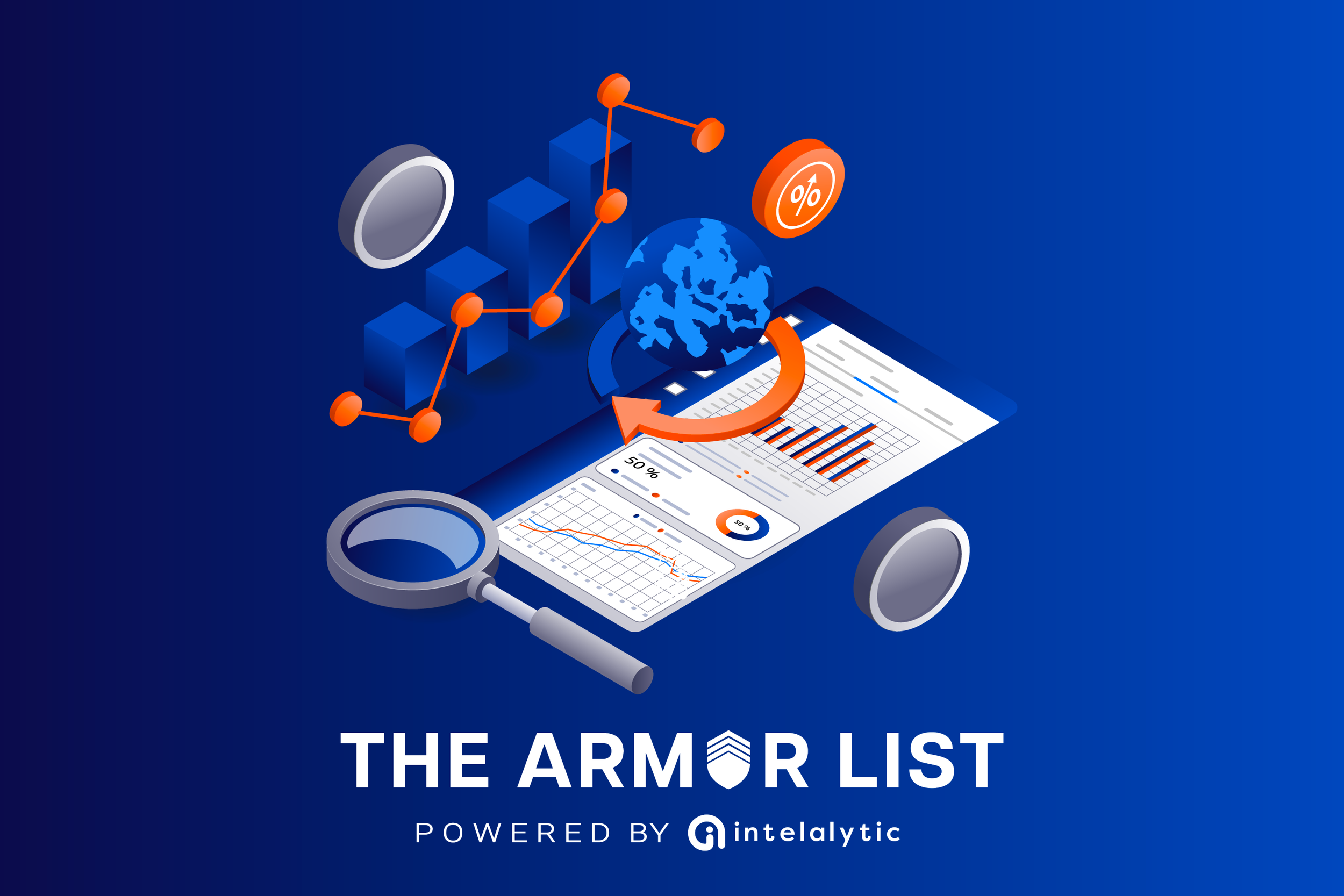Leveraging Big Data for Body Armor and Ballistic Resistant Products
The body armor sector is not merely adapting to the era of technology, it's pioneering it. At the forefront of this revolution is big data analytics, a powerful tool that is transforming the way body armor is designed, manufactured, and deployed. This isn't just about improving safety and performance, it's about fostering a culture of innovation. This article delves into the profound impact of big data on the body armor landscape, from predicting performance and optimizing manufacturing processes to enhancing safety features. We will also showcase case studies where data-driven insights have led to significant advancements in body armor technology, igniting enthusiasm about the innovative potential of big data.
The Power of Big Data in Body Armor
Big data refers to the vast volumes of daily structured and unstructured data. This data can come from various sources in the body armor industry, including field tests, laboratory experiments, real-world usage, and even wearable technology. Analyzing and interpreting this data allows manufacturers to gain deep insights into the performance and behavior of body armor materials and designs under different conditions.
Predicting Performance with Big Data
One of the most notable advantages of big data in the body armor industry is its predictive power. Traditional testing and evaluating body armor involve time-consuming and expensive physical tests. While these tests are crucial, they often provide limited data on how armor performs in different scenarios. Big data analytics can augment these traditional methods by offering a more comprehensive understanding of performance, thereby saving time and resources for manufacturers.
Manufacturers can uncover previously hidden patterns and correlations by analyzing data from high-speed cameras, pressure sensors, and strain gauges during ballistic testing. Sophisticated algorithms can meticulously process this data to forecast how body armor will perform against various threats, including different calibers of bullets and impact angles. This high level of predictive capability empowers manufacturers to design body armor that precisely meets specific performance criteria, ensuring superior protection for the wearer.
For example, researchers at the U.S. Army's Research Laboratory use big data to analyze the performance of different body armor materials under various conditions. By collecting and analyzing data from thousands of ballistic tests, they can identify the most effective materials and designs for specific threats, developing more resilient and reliable body armor.
Optimizing Manufacturing Processes
Big data is also crucial in optimizing the manufacturing processes of body armor. The production of body armor involves multiple stages, including material cutting, layering, assembly, and quality control. Each stage generates significant data that can be analyzed to improve efficiency and reduce costs.
For instance, predictive maintenance powered by big data analytics can foresee equipment failures before they occur, minimizing downtime and maintaining the continuous production of high-quality body armor. Sensors embedded in manufacturing equipment can collect data on temperature, vibration, and other parameters, alerting operators to potential issues before they lead to equipment failure.
Moreover, big data can help manufacturers optimize material usage and reduce waste. By analyzing data from different stages of production, manufacturers can identify inefficiencies and implement changes to improve processes. For example, data analysis can reveal patterns in material waste during cutting and layering, allowing manufacturers to adjust their processes to minimize waste and reduce costs.
A notable example is the use of digital twins in manufacturing. Digital twins are virtual replicas of physical systems that allow manufacturers to simulate and analyze production processes in real-time. By creating a digital twin of their production line, body armor manufacturers can use big data to monitor and optimize their processes continuously. This approach improves efficiency and ensures consistent quality in the final product.
Enhancing Safety Features
The primary goal of body armor is to protect lives, and big data enhances safety features to achieve this objective more effectively. Manufacturers can design gear that offers better protection and comfort by collecting and analyzing data on how body armor performs in various scenarios.
Wearable technology integrated with body armor can collect real-time data on temperature, humidity, and the wearer's physical condition. This data can be used to develop body armor that adapts to different environments and situations, providing optimal protection and comfort. For example, intelligent body armor equipped with sensors can alert the wearer and command center if it detects a ballistic impact, helping in prompt medical response and situational awareness.
Additionally, big data can be used to develop customized body armor tailored to the specific needs of individual users. By analyzing data on an individual’s body measurements, movement patterns, and operational environment, manufacturers can create body armor that fits better and provides enhanced protection. This personalized approach improves safety and increases comfort and mobility for the wearer.
Case Studies of Data-Driven Advancements
Hexwave by Liberty Defense:
Liberty Defense's Hexwave system utilizes machine learning and artificial intelligence to detect concealed weapons, including body armor, by analyzing electromagnetic waves. This technology represents a significant leap in threat detection capabilities, leveraging big data to enhance security measures in public spaces. By collecting and analyzing vast amounts of data, Hexwave can identify threats more accurately and efficiently than traditional methods, providing a higher level of protection for both law enforcement officers and civilians.
More Information: Hexwave by Liberty Defense
BAE Systems' Adaptive Body Armor:
BAE Systems has developed adaptive body armor that changes its properties based on the threat level. This innovation is powered by big data analytics, which informs the armor's design by predicting various threat scenarios and optimizing the material response accordingly. The adaptive body armor uses sensors to detect the type and intensity of an impact and adjusts its stiffness and flexibility to provide optimal protection. This data-driven approach ensures that the armor offers maximum protection while maintaining comfort and mobility.
DuPont's Kevlar EXO:
DuPont has used big data to enhance the performance of Kevlar EXO, their latest innovation in body armor materials. DuPont identified the optimal combination of materials and manufacturing processes to maximize protection and comfort by analyzing extensive data sets from field performance and laboratory tests. Big data analytics allowed DuPont to examine how Kevlar EXO performs under various conditions and user scenarios, leading to a design that offers superior ballistic protection while lighter and more flexible. This use of big data ensures that Kevlar EXO meets and exceeds the highest standards of safety and wearability, providing enhanced comfort for users without compromising on protection.
More Information: DuPont's Kevlar EXO
ShotSpotter:
ShotSpotter is a gunshot detection system that uses big data and acoustic sensors to identify and locate gunfire incidents in real time. While not directly related to body armor, ShotSpotter provides valuable data that can be used to improve the safety of law enforcement officers. By analyzing data from gunshot incidents, law enforcement agencies can better understand the patterns and trends of gun violence in their communities, allowing them to deploy resources more effectively and reduce the risk of harm to officers and civilians.
More Information: ShotSpotter
The Future of Body Armor: Challenges and Opportunities
While the potential benefits of big data in the body armor industry are significant, some challenges need to be addressed. One of the primary challenges is integrating big data analytics into existing manufacturing and design processes. Many body armor manufacturers may lack the infrastructure and expertise to effectively collect, analyze, and utilize big data.
Additionally, using big data raises concerns about data privacy and security. Manufacturers must ensure that the data they collect is stored and processed securely and that individuals' privacy is protected. This requires robust data governance policies and the implementation of advanced cybersecurity measures.
Despite these challenges, the opportunities presented by big data in the body armor industry are immense. By leveraging big data, manufacturers can develop body armor that is more effective, efficient, and tailored to the needs of individual users. This enhances the safety and performance of body armor and drives innovation and competitiveness in the industry.
Big data undeniably transforms the body armor industry, paving the way for innovations that enhance safety, performance, and efficiency. By leveraging data analytics, manufacturers can predict performance, optimize manufacturing processes, and develop advanced safety features that cater to the evolving needs of law enforcement, military personnel, and civilians. The future of body armor lies in the continued integration of big data, ensuring that protective gear remains at the forefront of technological advancements.
IntelAlytic is committed to driving innovation in the body armor industry through advanced data analytics. We invite manufacturers, researchers, and end users to collaborate with us in harnessing the power of big data to develop the next generation of body armor. Contact IntelAlytic today to learn more about our cutting-edge solutions and how we can help you enhance the safety and performance of your protective gear. Together, we can create a safer and more innovative future for body armor technology.
Interested in working with IntelAlytic?
Explore IntelAlytic Services
Follow us on LinkedIn for daily tips and resources








